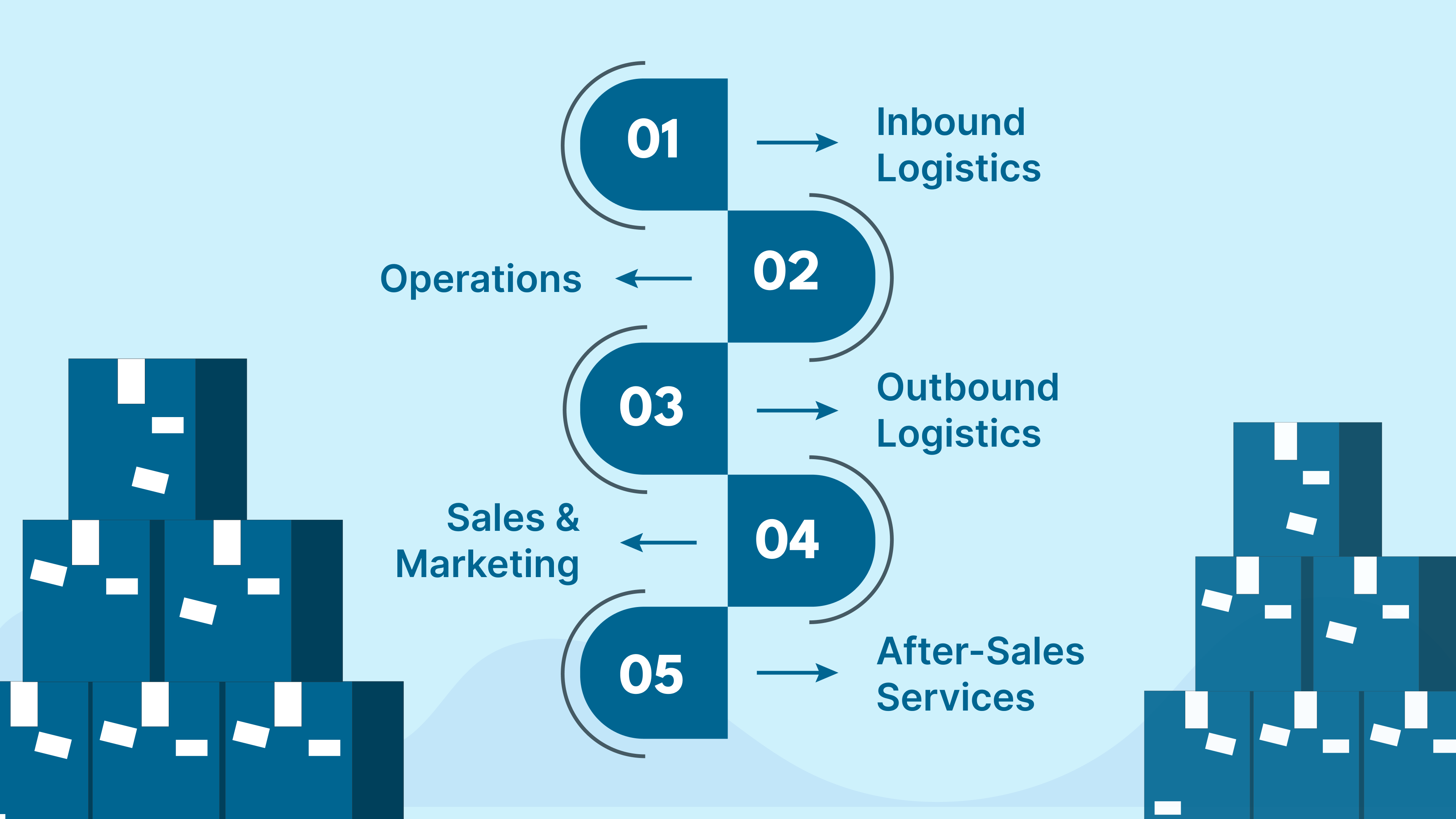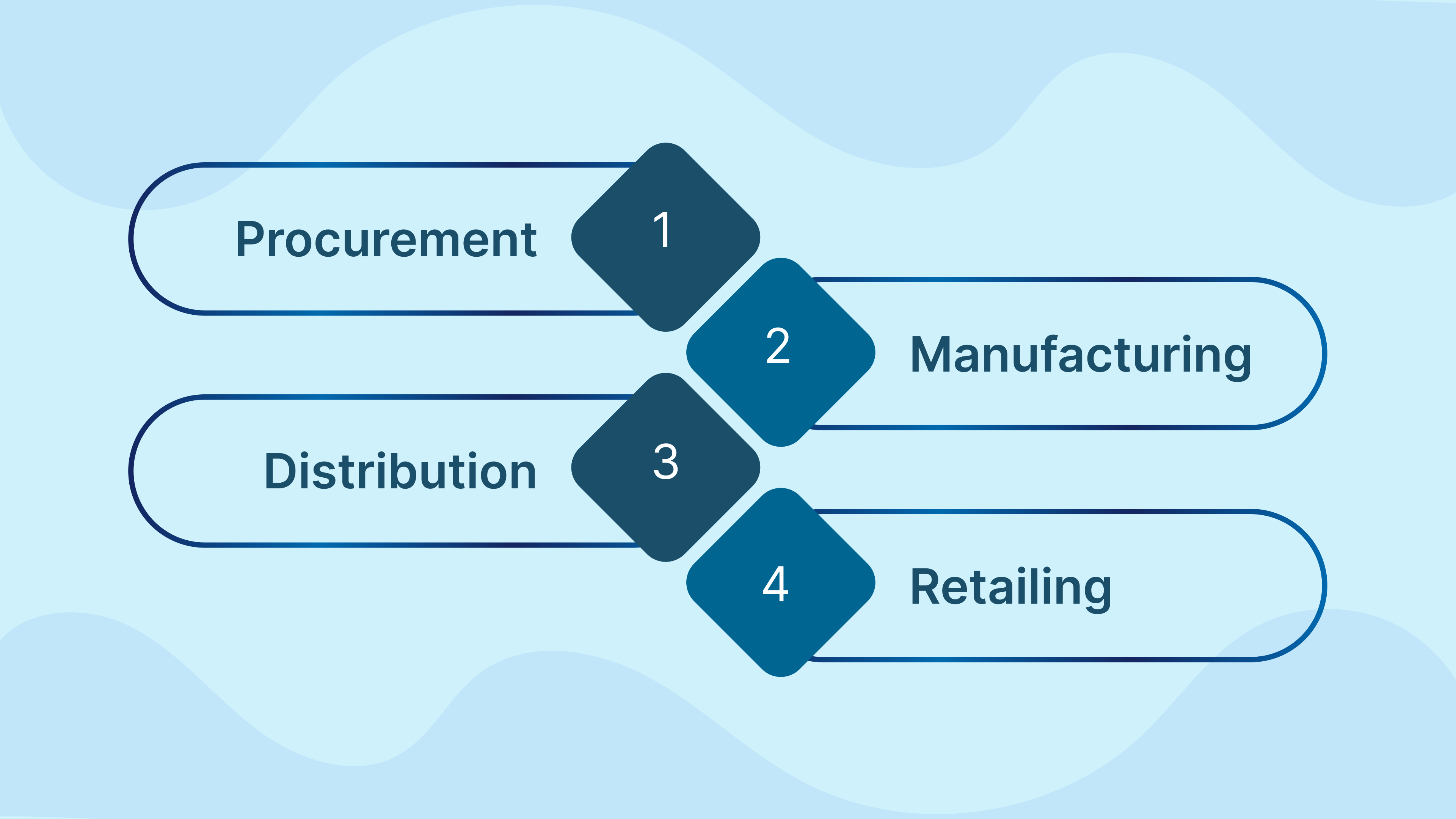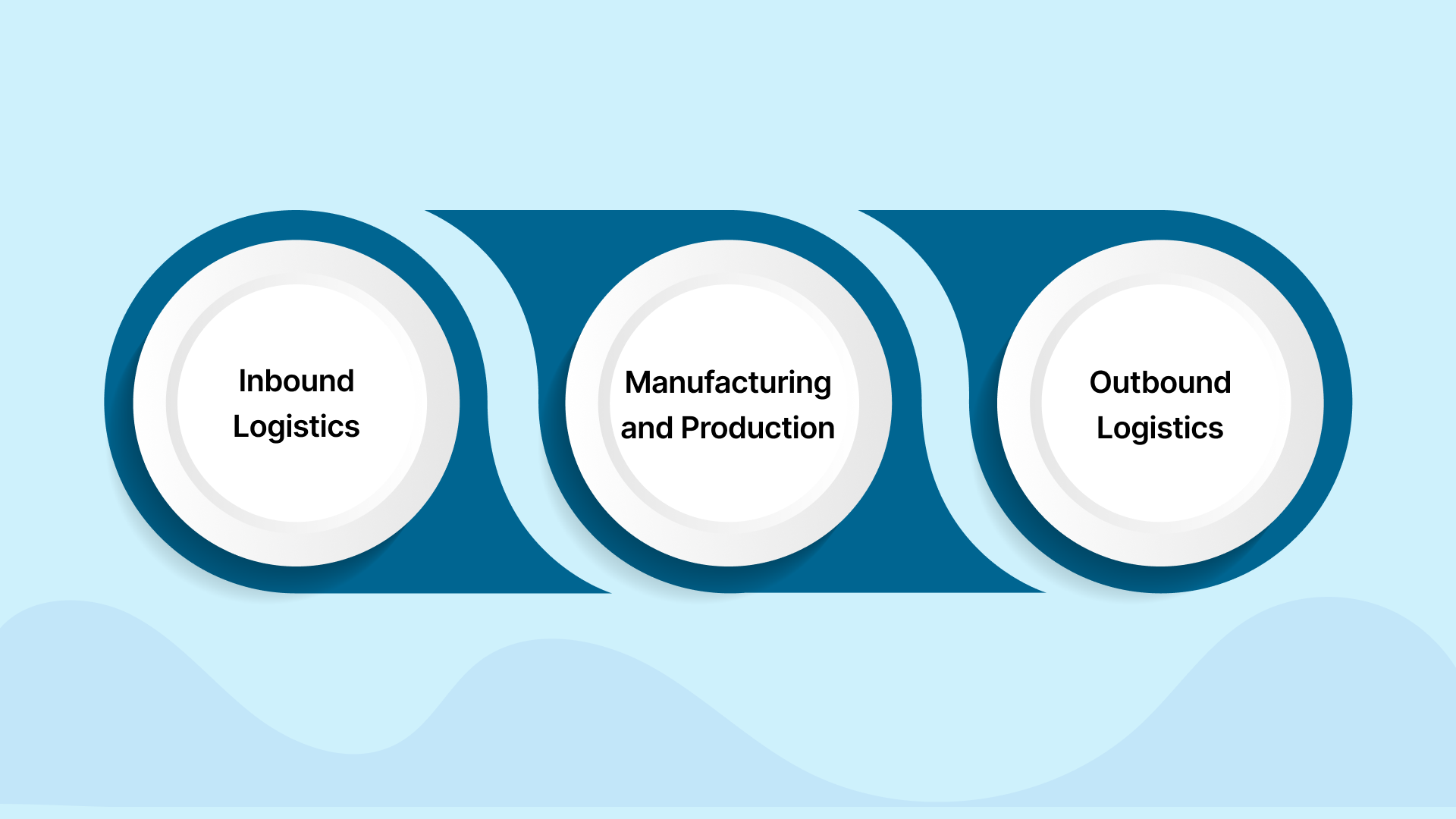How well do you understand the key differences between the value chain and supply chain in your business? These two concepts are fundamental to optimizing your operations and gaining a competitive edge, yet they serve different purposes within your business structure.
In the Philippines, where the freight transport segment led with 63.34% of the logistics market share in 2024, and the courier, express, and parcel (CEP) segment is projected to grow at a rapid 6.89% CAGR between 2025 and 2030, understanding these differences becomes even more crucial. By aligning your value chain and supply chain strategies, you can enhance operational efficiency and meet rising customer expectations.
This blog will help you steer the distinctions between value chain and supply chain, explore their key components, and provide actionable insights to drive success for your business.
The term “value chain”, coined by Michael Porter, a Harvard Business School professor, refers to the series of activities that a business undertakes to deliver a product or service, from its initial conception to the final delivery to the customer. These activities add value at each step of the process, enhancing the overall product offering and contributing to customer satisfaction.

Now that you understand the core components of the value chain, it’s time to dive into the supply chain, which, while related, focuses on a different aspect of operations.
Imagine a customer wants a new computer with a fast processor for video editing, needs it quickly for work, and has a specific price range in mind. To meet this customer’s needs, the computer manufacturer must ensure their product meets all these requirements.
In this case, the value chain is designed to deliver the product efficiently while maximizing customer satisfaction at each stage, giving the manufacturer a competitive edge.
Ensure fast and reliable delivery to your customers with Inspire Solutions Asia’s SameDay and NextDay services.
Schedule a meeting today
A supply chain refers to the broader network of activities, organizations, and resources involved in producing and delivering a product or service. It includes everything from raw material sourcing to the delivery of finished products to consumers. The supply chain’s goal is to optimize operations by ensuring efficient and cost-effective flow of goods and services from suppliers to customers.
Imagine a customer looking to buy a new smartphone. The process begins with the procurement of raw materials, such as metals, plastics, and electronic components, which are then shipped to a manufacturing plant. Once assembled, the smartphone is distributed to regional warehouses, then to retail stores or delivered directly to the customer’s door.
For the customer to receive the phone on time, the supply chain ensures that stock levels are updated, shipping methods are optimized, and delivery timeframes are clearly communicated. Additionally, customer support services, including troubleshooting, warranty claims, and returns, are also integral to the supply chain process.
The Goal: To optimize the flow of goods from suppliers to customers while reducing costs, ensuring quality, and meeting delivery timelines.
Supply chain management is focused on improving the efficiency of operations at each stage, ensuring that the product reaches the customer as quickly and cost-effectively as possible.
Now that you understand the essentials of the supply chain, let’s examine the key differences between the value chain and supply chain and how they complement each other.
Also Read: Understanding Supply Operations Management and Processes
Both the value chain and supply chain are essential to business success, but they each have distinct focuses, objectives, and impacts. Below is a detailed breakdown of their key differences:
| Aspect | Value Chain | Supply Chain |
| Focus | The value chain focuses on creating value at each stage of the product development process, from idea generation to after-sales services. | The supply chain focuses on the efficient flow of goods and services, managing everything from raw material acquisition to product delivery to customers. |
| Objective | The objective of the value chain is to add value to products or services, making them more attractive to customers and differentiating them from competitors. | The supply chain’s goal is to streamline operations, reduce costs, and ensure the timely availability of products and services to meet customer demand. |
| Impact | Value chain activities directly impact customer satisfaction, brand loyalty, and overall competitive positioning in the market. | Supply chain activities primarily affect operational efficiency, cost control, inventory management, and on-time delivery to customers. |
| Key Activities | Value chain involves activities such as product design, marketing, and after-sales service, which enhance product offerings and customer experience. | Supply chain involves procurement, manufacturing, logistics, and distribution of goods and services, focusing on smooth and cost-effective delivery. |
| Scope | The value chain is internal and focuses on optimizing processes within a company to create value for customers. | The supply chain is external and focuses on the entire network of entities involved in the production and delivery of goods. |
Understanding these differences in detail can help you identify areas within your business where improvement is needed. The next step is to explore how these two concepts can work together to optimize your processes and enhance overall business performance.
Also Read: Understanding the Difference Between Logistics and Supply Chain Management
While the value chain and supply chain serve different purposes, they work together to optimize operations and meet customer expectations. The value chain focuses on differentiating products, while the supply chain ensures that the right products are available at the right time.
In synergy, the supply chain keeps things moving smoothly, ensuring that resources are available when needed. The value chain then enhances these resources to create products that attract, satisfy, and retain customers.
Understanding how value chains and supply chains complement one another is only part of the picture. Recognizing their shared goals and operational overlaps is equally essential for strategic alignment and efficiency.
Looking for financial assistance to grow your e-commerce business and lower operational expenses?
Schedule a meeting today.
Now that we’ve explored their differences and complementary nature, let’s examine the key similarities between value chains and supply chains, which are both vital for optimizing business operations.
To unlock greater efficiency and customer value, businesses must go beyond logistics and logistics management. Integrating value chain thinking into supply chain processes unlocks new opportunities for innovation, differentiation, and customer loyalty.
How can businesses apply value chain thinking in their supply chains to create value beyond the costs of goods or services? By integrating value chain principles, businesses can enhance their supply chain and create additional value for customers. Below are three key areas where value chains intersect supply chains, and the kinds of value-creating opportunities that may arise in each:
This stage involves receiving, storing, and managing the incoming resources necessary for production. The primary value here is ensuring that materials are available in the right quantities and conditions.
In this area, value can be added by improving production processes, reducing costs, and enhancing product quality.
Once products are ready, they need to be delivered efficiently to customers. This stage includes storage, collection, and distribution.
Delivery Flexibility: Offer customers a variety of delivery options, such as scheduled times or alternate delivery locations, ensuring greater convenience.
At Inspire Solutions Asia, we specialize in optimizing both the value chain and supply chain for businesses in the Philippines. We offer a range of services tailored to improve operational efficiency and customer satisfaction, including:
We also offer AI-powered customer engagement through InspireBots, a chatbot designed to automate responses, resolve common queries, and offer real-time support. By improving customer service efficiency and reducing manual workload, InspireBots enhance the value chain through stronger after-sales support and a more responsive customer experience.
Inspire Solutions Asia streamlines logistics and fulfillment to boost your competitive edge and ensure customer satisfaction
Get a Quote NowUnderstanding the key differences between the value chain and supply chain is essential for businesses in the Philippines looking to optimize operations and enhance customer satisfaction. While the value chain focuses on adding value to products and differentiating them from competitors, the supply chain ensures efficient and timely delivery of goods to customers. When these two components work in harmony, businesses can achieve operational excellence, improve efficiency, and effectively meet customer expectations.
At Inspire Solutions Asia, we specialize in optimizing both value and supply chains for businesses, offering customized solutions for warehousing, fulfillment, sourcing, and logistics. Our services are designed to streamline your operations, reduce costs, and improve your overall efficiency.
Boost your business operations and stay ahead in the Philippine market
Get a Quote NowYes, the supply chain is a component of the broader value chain. While the supply chain focuses on logistics and operations, the value chain encompasses additional functions. This includes marketing, customer service, infrastructure, and sustainability efforts, which collectively enhance a product’s overall value.
Align your product development and operational strategies and invest in technology for better supply chain management. By ensuring strong communication between departments, you can optimize both your value and supply chain processes for improved overall performance.
Absolutely, by optimizing internal support activities such as HR, technology, and procurement, value chain analysis identifies inefficiencies. This helps in driving cost reduction while enhancing the value of products or services.
Warehousing is essential in the supply chain as it ensures the safe storage of goods, real-time inventory management, and efficient order fulfillment. It allows businesses to maintain stock levels that meet demand and helps in the timely delivery of products to customers.
Inspire combines streamlined logistics, such as fast pick-and-pack and real-time inventory, with customer-focused add-ons like seamless multi-channel integration and COD options. This enhances both operational flow (supply chain) and customer value creation (value chain) through a unified platform.